The Road to Meiji Jingu
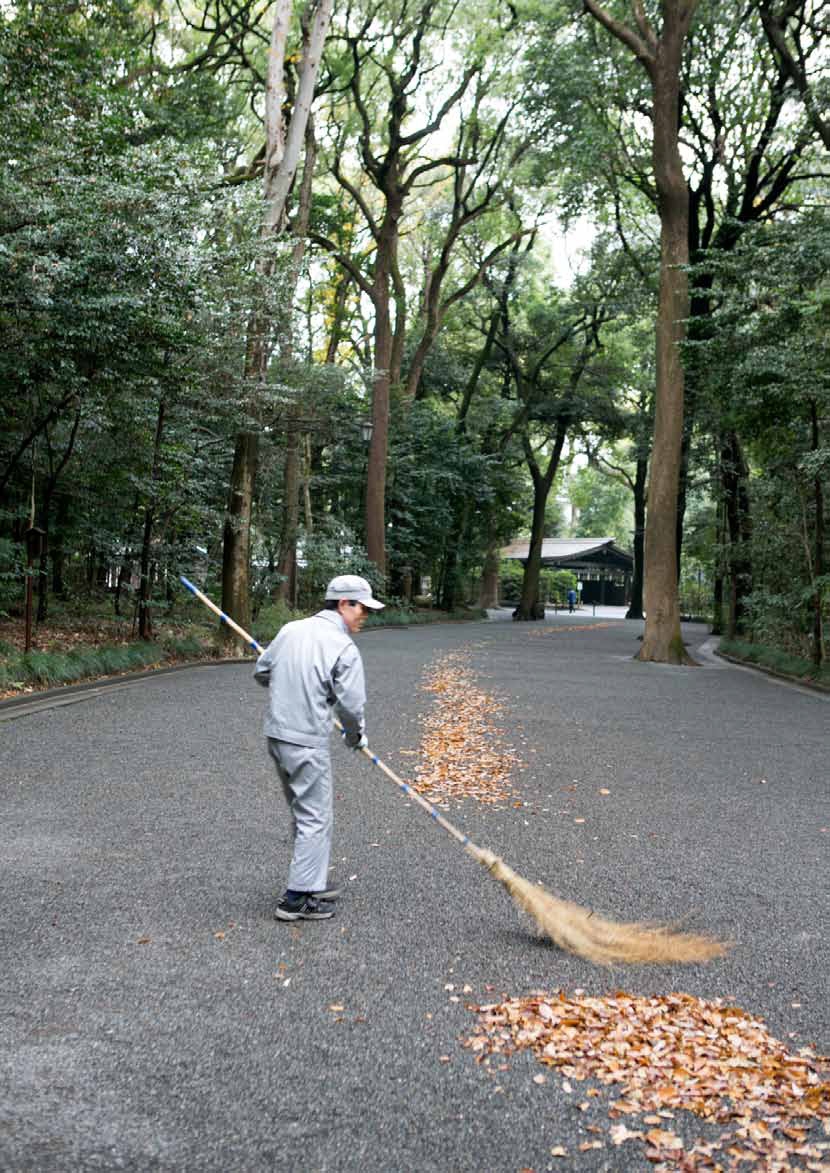
Sweeping the long broom in a large arc gathers up leaves within a wide reach. Simply pushing with all your strength isn’t effective.
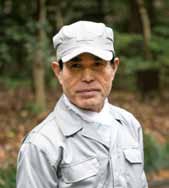
Yoshiine Yoshida
Yoshiine Yoshida has been a sweeper at Meiji Jingu for nine years. Cleaning the road to the shrine is pleasant work, he says.
It feels good to walk along a clean, freshly swept road. Thinking of the constant stream of people who have walked up and back along this very same road for hundreds of years to pray at the shrine fills the mind with a myriad of emotions.
A team of skilled sweepers, known as fukiya-san, keep the 700,000 square meter grounds of the Meiji Jingu shrine clean. The road and main shrine environs are divided up amongst ten sweepers, who head out to their assigned area every day at 7:00 a.m.
Yoshii Yoshida’s assigned area is the road. But he has been in this job for nine years and so has experience cleaning three other sections, since assigned areas are rotated every two to three years. “I’ve swept the main shrine,” he says, “but I like cleaning the road. It’s nice being surrounded by all this green.” Almost all of what falls onto the road is leaves. An enormous volume of leaves from the 170,000 or so trees and shrubs drops to the ground throughout the shrine precinct.
Unfortunately, there is no special trick for sweeping them up all at once. A blower is used to move the leaves from the edge into the road, where they are scraped together with a broom and gathered up with a dustpan. The gravel is smoothed out at the same time.
The broom that Yoshida uses is taller than he is. The longer the broom, the wider its reach, but handling a long broom is not easy. “If the sweeping motion is too weak leaves are left behind, but if it’s too strong the broom gets caught in the gravel. It’s also hard to keep balanced because it’s so long.” The first thing to do when starting this job is to make the broom.
Getting the thickness right is surprisingly difficult. Too thick and it is hard to grip, too thin and it bends so poorly as to be useless. Sweepers attach the twigs to the broom themselves, and these wear away every time they are used to draw the leaves in close, especially on rainy days. A broom’s efficiency is dependent on how well the twigs are attached, so daily maintenance is essential.
What do the sweepers think about as they work away in silence? When asked, Yoshida answers in a few words: “The people coming to pray.” Birdsong echoes through the dense green woods of Meiji Jingu, and the air around the road cleaned by Yoshida feels pure and fresh.
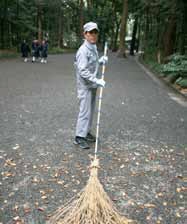
The broom is taller than a person. Sweepers make their own brooms, adjusting the thickness and length for easy handling.
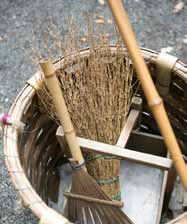
Two brooms are used; a long one with a wide reach, and a small one for focused sweeping.
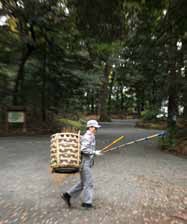
The order of sweeping work is decided according to the conditions, such as how the leaves are scattered and wind direction.